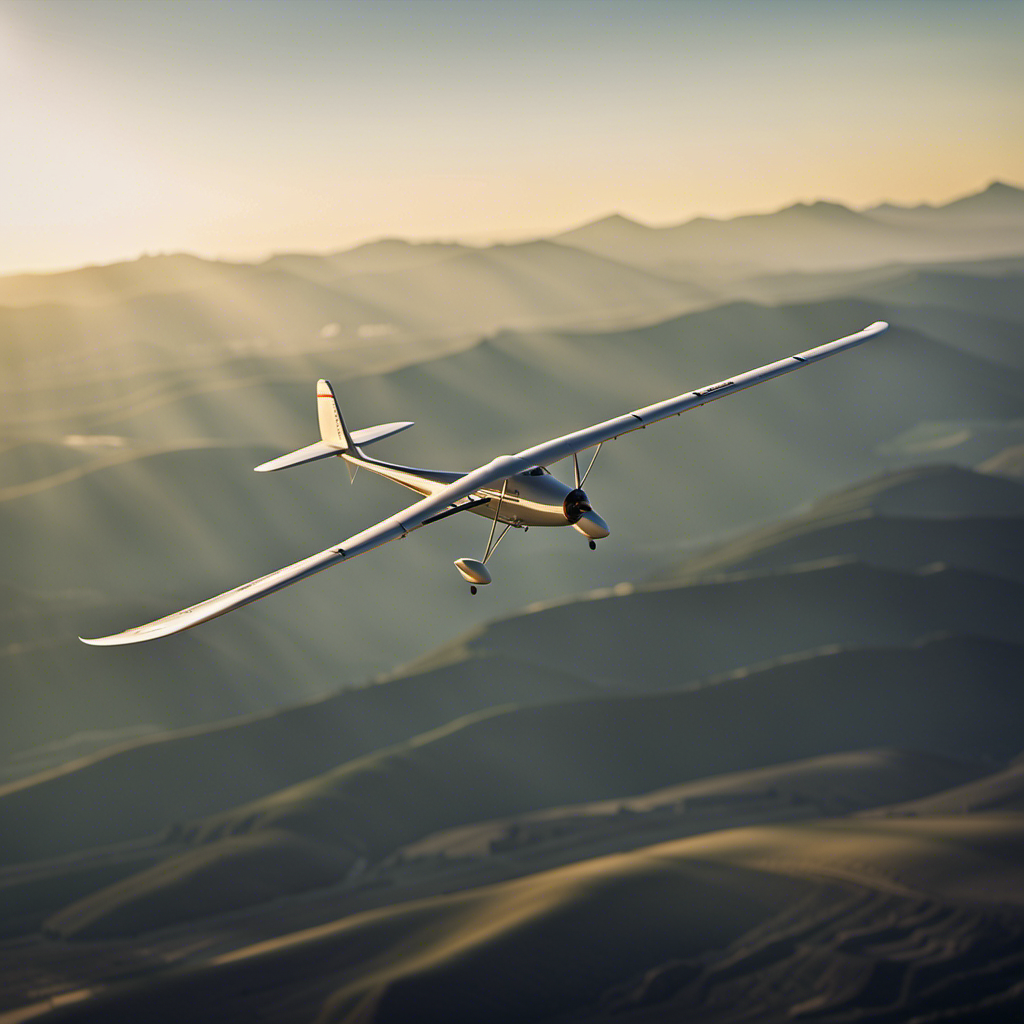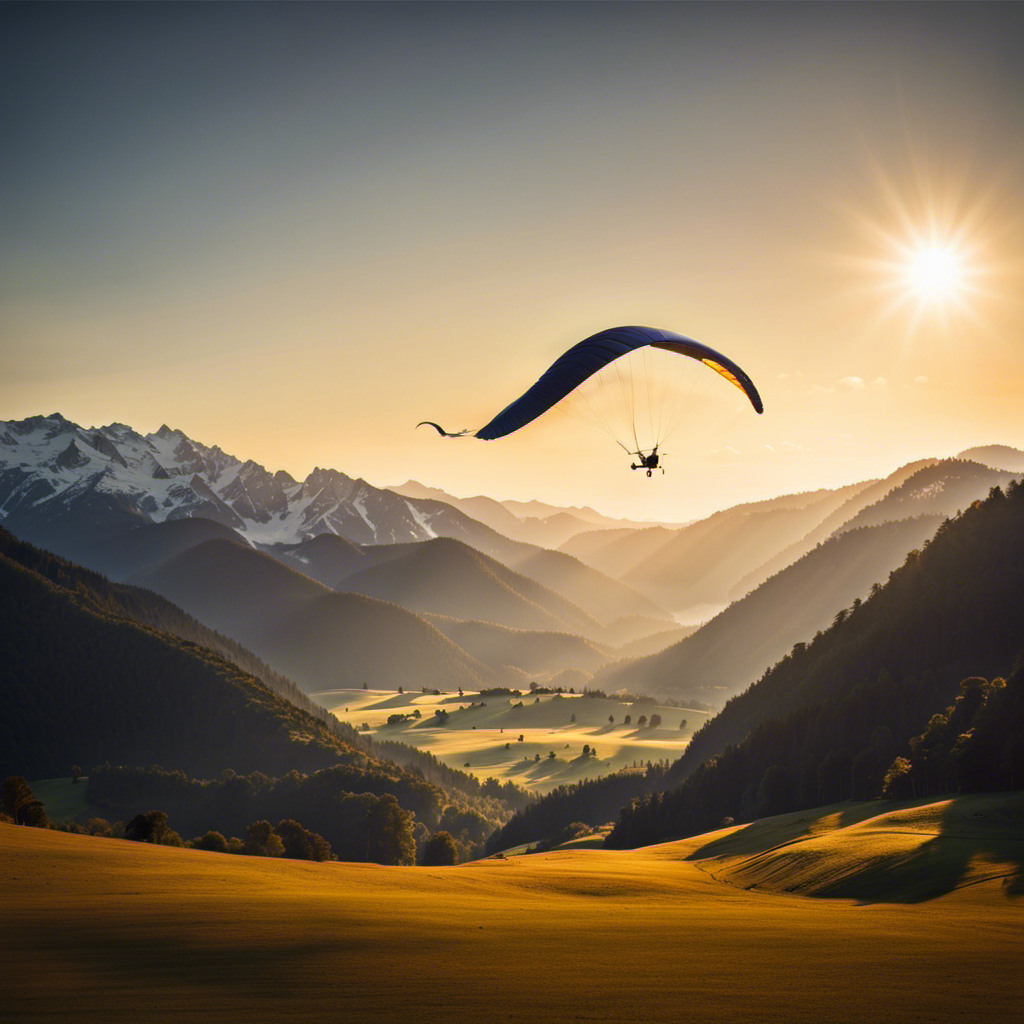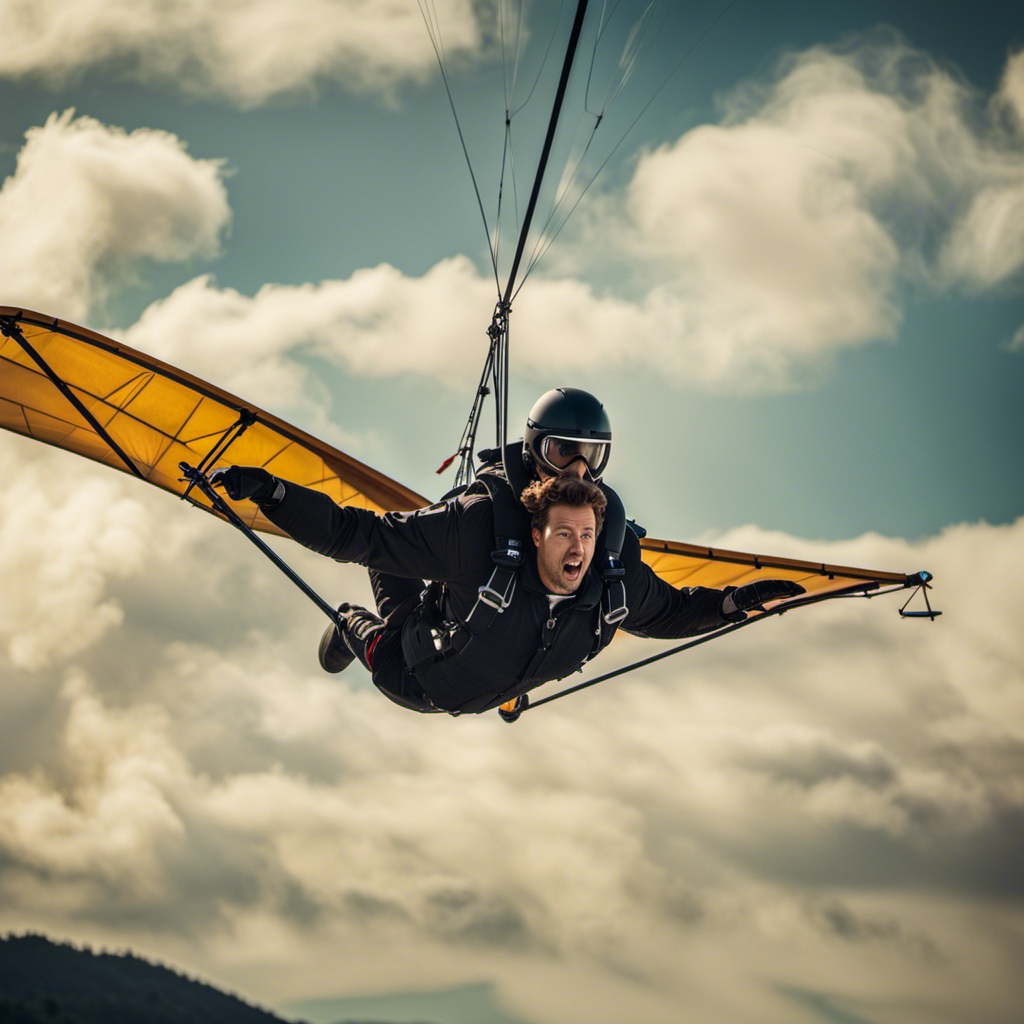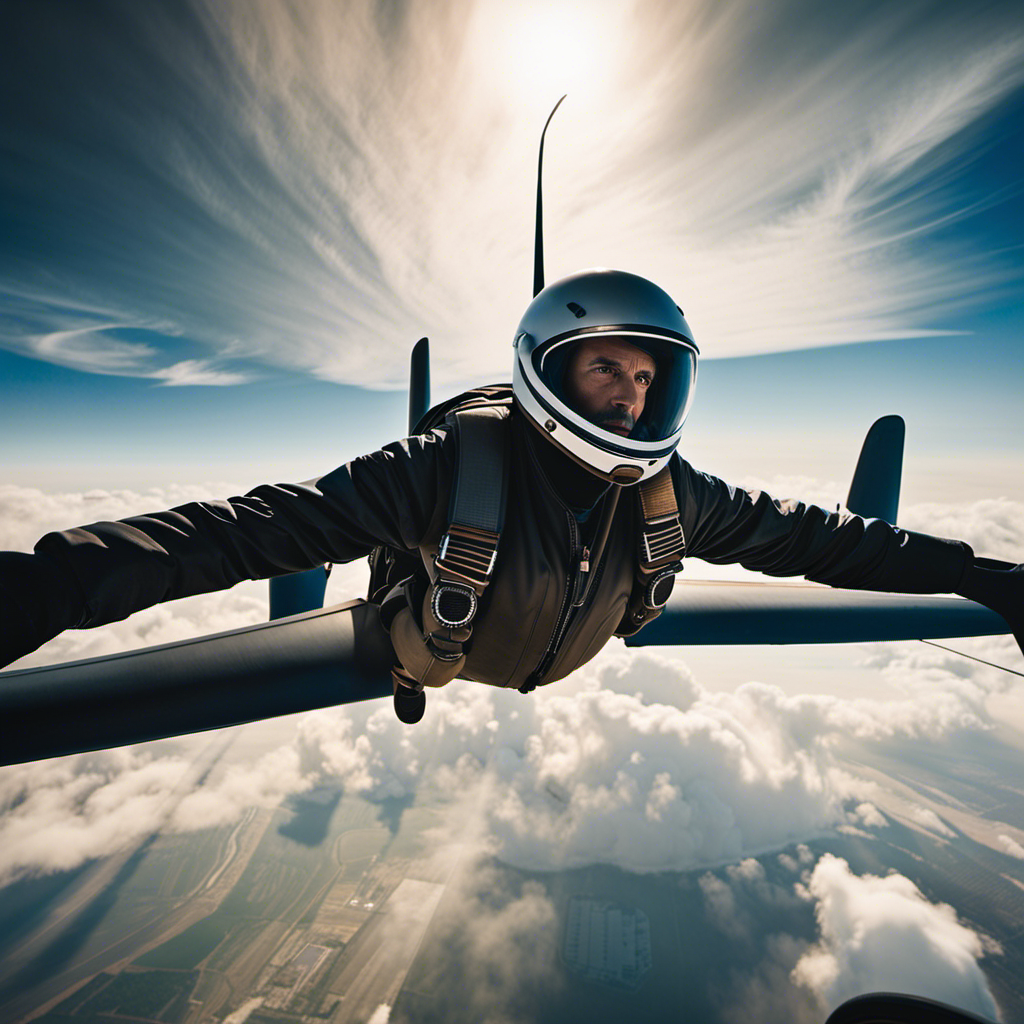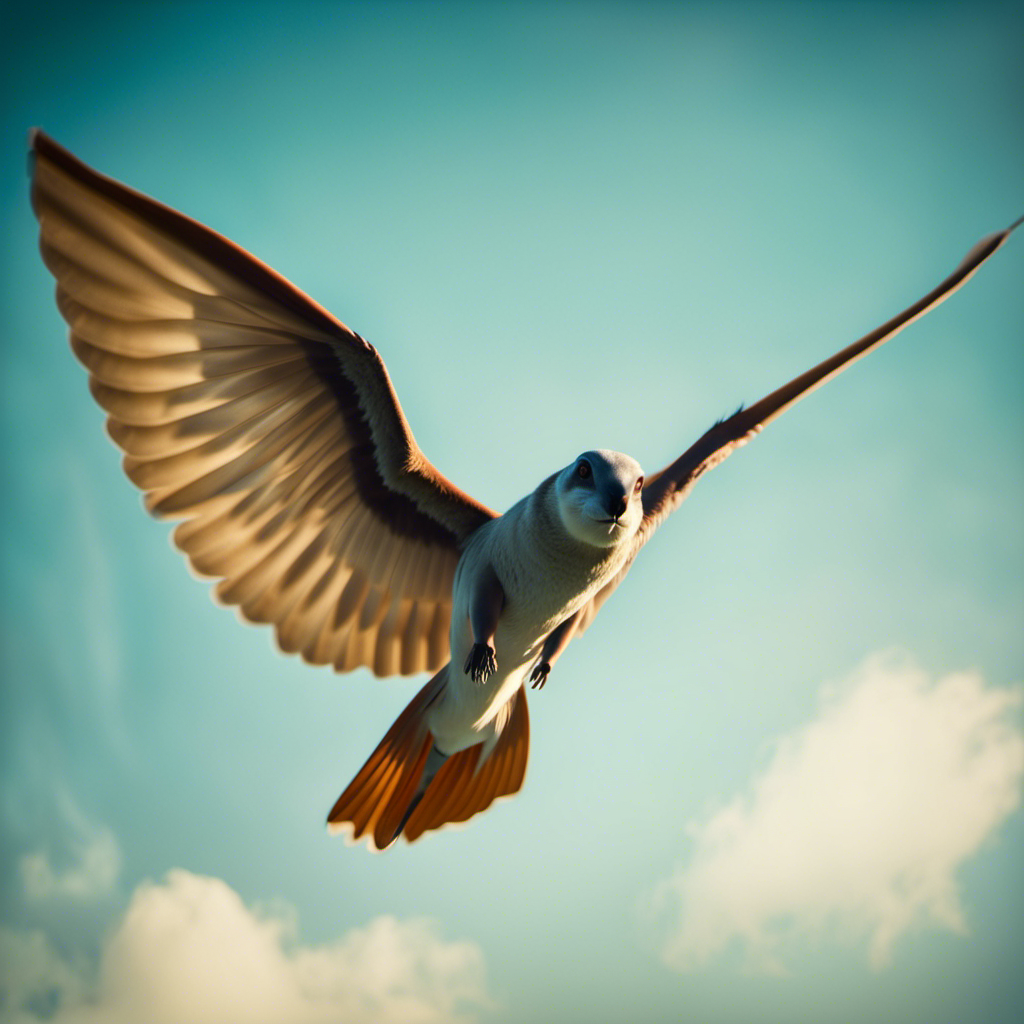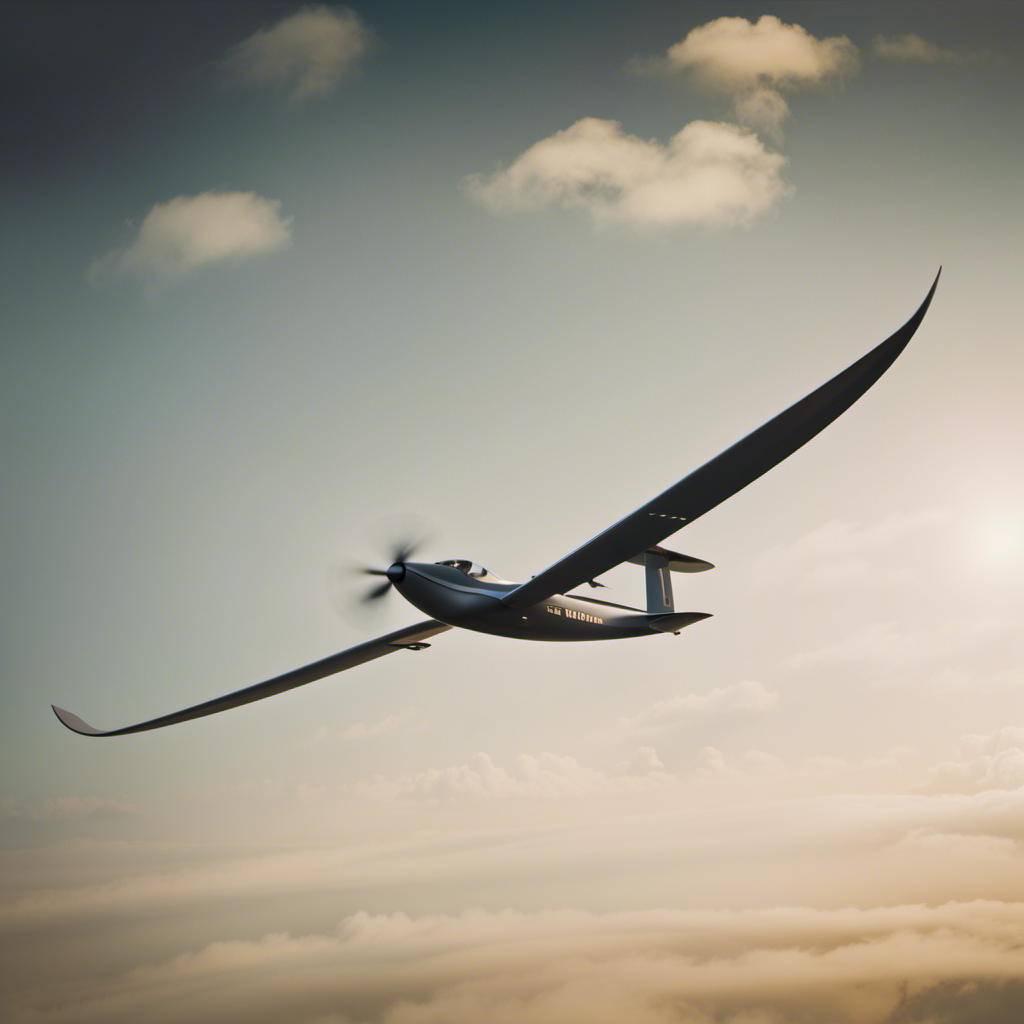Being a passionate pilot, I have always been fascinated by the graceful flight of gliders. Despite what many people may think, gliders do not rely on engines for their flight; instead, they harness the power of nature to stay in the air.
In this article, we will explore the inner workings of gliders, from their historical roots to the principles of flight that allow them to stay airborne.
Get ready to delve into the world of glider technology and discover the secrets behind their ethereal flight.
Key Takeaways
- Gliders rely on lift and gravity, rather than an engine, to fly.
- Gliding is dependent on weather conditions and specific wind patterns.
- Gliders have limited range and cannot travel long distances.
- Gliding offers a unique perspective from above and a sense of freedom and tranquility.
Brief History of Gliders
Gliders have been around since the late 19th century, when inventors began experimenting with various designs. The history of gliders is deeply intertwined with the development of aviation.
It all started with pioneers like Otto Lilienthal and Octave Chanute, who conducted extensive studies on aerodynamics and designed successful glider prototypes. Their work laid the foundation for the principles of flight that we know today.
These early gliders were simple in design, constructed mostly from wood and fabric. Over time, advancements in materials and engineering led to the development of more sophisticated gliders, capable of achieving longer and higher flights.
Transitioning into the principles of flight, it is essential to understand the basic aerodynamic concepts behind the functioning of gliders.
Principles of Flight
To understand the principles of flight, you need to grasp the concept of lift and how it allows you to glide through the air effortlessly.
Lift is generated by the principles of aerodynamics, which involve the forces of flight acting on a glider. As air flows over the wings of a glider, it creates a pressure difference, with lower pressure on top and higher pressure on the bottom.
This pressure difference generates lift, which opposes the force of gravity and allows the glider to stay airborne. By adjusting the angle of attack and controlling the lift forces, a pilot can maneuver the glider in different directions.
Understanding these principles is essential before exploring the various types of gliders and their unique characteristics.
Types of Gliders
There are several different types of gliders, each with their own unique characteristics. Gliders are classified based on their performance capabilities, training, and certification requirements.
Here are three types of gliders commonly used in the aviation industry:
-
Standard Class Gliders: These gliders have a wingspan of 15 meters and are designed for cross-country flying. They have a glide ratio of around 40:1, which means they can travel 40 units forward for every unit of altitude lost. Pilots must undergo specific training and obtain certification to fly this type of glider.
-
Open Class Gliders: These gliders are built for performance and can reach high speeds. They have a wingspan of up to 18 meters and are often used in glider racing competitions. Pilots require advanced training and certification to operate these gliders due to their complex systems and high-speed capabilities.
-
Motor Gliders: Unlike pure gliders, motor gliders are equipped with an engine that can be used to take off and climb. Once in the air, the engine can be turned off, and the glider can be flown like a normal glider. Pilots need training and certification for both powered flight and gliding to operate motor gliders.
Understanding the different types of gliders is crucial for pilots to select the right aircraft for their needs and to ensure they meet the necessary training and certification requirements.
Transitioning into the subsequent section about ‘design and construction,’ it is important to consider how these different types of gliders are built to optimize their performance capabilities.
Design and Construction
When considering design and construction, you’ll discover how various components and materials are used to enhance the performance of different types of gliders. Glider materials play a crucial role in achieving optimal flight characteristics. The materials used must be lightweight yet strong enough to withstand the forces exerted during flight. Common materials include carbon fiber composites, fiberglass, and balsa wood. These materials are chosen for their high strength-to-weight ratios, allowing gliders to achieve longer flight times and better maneuverability.
Additionally, aerodynamics principles are applied in the design process to minimize drag and maximize lift. Streamlined shapes, such as airfoils and wing profiles, are employed to reduce air resistance and generate lift. By carefully selecting glider materials and incorporating aerodynamics principles, designers can create efficient and high-performing gliders.
Now, let’s explore the different launching methods used in glider operations.
Launching Methods
Different launching methods are utilized to get gliders into the air. One method is bungee launching, which involves using a high-tension rubber cord to catapult the glider into the sky. This method requires careful coordination and timing to ensure a smooth takeoff.
Another method is aerotow launching, which involves a powered aircraft towing the glider into the air using a tow rope. The glider pilot releases the tow rope at the desired altitude, allowing the glider to continue its flight independently.
Bungee launching provides an exhilarating rush as the glider is propelled into the air by a powerful release of energy. On the other hand, aerotow launching offers a feeling of being lifted gracefully by a tow aircraft, soaring higher and higher.
The anticipation builds as the moment approaches for the tow rope to be released, and the glider becomes free to explore the sky. Once released, the glider glides silently through the air, with no engine noise to disturb the peace.
With these launching methods mastered, glider pilots can now focus on perfecting their soaring techniques to stay airborne for extended periods of time.
Soaring Techniques
To maximize your flight time, you’ll need to master the art of finding and utilizing thermals during your gliding adventures. Thermals are columns of rising air created by the sun heating the earth’s surface unevenly. By circling within a thermal, glider pilots can gain altitude and extend their flight.
Another technique used by glider pilots is ridge lift, which occurs when wind is forced up a slope, creating an updraft along the ridge. This allows pilots to gain altitude by flying close to the ridge line.
Additionally, dynamic soaring and wave lift are advanced techniques used by experienced glider pilots. Dynamic soaring involves using the energy from wind shear to gain speed, while wave lift occurs when wind encounters a mountain range, producing a series of alternating lift and sink areas.
These soaring techniques are essential for maximizing flight time and exploring the skies.
Now, let’s delve into the important safety measures and regulations for glider pilots.
Safety Measures and Regulations
As we explored the various soaring techniques, it is essential to address the safety measures and regulatory compliance associated with gliding. Gliders, being aircraft, are subject to specific safety standards and regulations to ensure the well-being of pilots and passengers. To emphasize this, consider the following:
-
Safety Measures:
-
Pre-flight inspections: Thoroughly checking the glider’s condition before every flight, including the control surfaces, landing gear, and safety equipment.
-
Pilot training: Receiving comprehensive training on glider operations, emergency procedures, and weather conditions to enhance situational awareness.
-
Emergency protocols: Establishing protocols for emergency situations such as landings, equipment malfunctions, or adverse weather conditions.
-
Regulatory Compliance:
-
Licensing requirements: Complying with the necessary certifications and licenses to operate gliders legally and safely.
-
Airspace regulations: Adhering to specific airspace restrictions and communication protocols to avoid collisions with other aircraft.
-
Maintenance and inspections: Conducting regular maintenance and inspections to ensure the glider’s airworthiness and compliance with regulatory guidelines.
Understanding and implementing these safety measures and regulatory compliance protocols are crucial to ensure a safe and enjoyable gliding experience.
Now, let’s delve into the advantages and limitations of gliders.
Advantages and Limitations of Gliders
One of the advantages of gliding is that it allows individuals to experience the thrill of flying without the need for an engine. Gliders are lightweight aircraft that rely on the forces of lift and gravity to stay aloft. They are typically launched by a tow plane or by being winched into the air.
Once airborne, gliders can soar for hours using rising air currents, also known as thermals, ridge lift, or wave lift. Gliding offers a unique perspective of the world from above and provides a sense of freedom and tranquility.
However, there are also limitations to gliding. Gliders are dependent on weather conditions and require specific wind patterns to stay airborne. Additionally, without an engine, gliders have limited range and cannot travel long distances.
Despite these limitations, gliders continue to captivate enthusiasts and push the boundaries of flight. In fact, many famous glider records and achievements have been accomplished, showcasing the incredible capabilities of these aircraft.
Famous Glider Records and Achievements
If you want to be inspired by incredible feats, look no further than the famous glider records and achievements.
Glider pilots have pushed the boundaries of what is possible in the world of aviation, demonstrating exceptional skill and determination.
In glider competitions, pilots have achieved remarkable distances, durations, and altitudes.
For example, Steve Fossett set a world record for the longest glider flight with a distance of 2,263.8 kilometers.
Another famous glider pilot, Klaus Ohlmann, holds the record for the highest altitude reached in a glider, soaring to 14,631 meters.
These achievements showcase the capabilities of glider technology and the skill of the pilots who operate them.
As we look to the future of glider technology and innovation, we can expect even more remarkable accomplishments.
Future of Glider Technology and Innovation
To see what advancements are on the horizon for glider technology and innovation, you should keep an eye on the latest research and development in the field. The future of gliders is exciting, with a focus on using sustainable materials and developing autonomous gliders.
In terms of materials, researchers are exploring the use of lightweight and eco-friendly options such as carbon fiber composites and bio-based resins. These materials not only reduce the environmental impact but also enhance the glider’s performance by providing strength and durability.
Additionally, the development of autonomous gliders is gaining momentum. These gliders are equipped with advanced sensors, artificial intelligence, and navigation systems that allow them to fly independently and make intelligent decisions based on real-time data. Autonomous gliders have the potential to revolutionize various industries, including surveillance, environmental monitoring, and disaster management.
Exciting advancements are on the horizon for glider technology, and the use of sustainable materials and the rise of autonomous gliders are just a glimpse into the future of this field. Stay tuned for further developments.
Frequently Asked Questions
How much does a glider weigh?
A glider typically weighs between 500 to 2000 pounds, depending on its size and construction materials. The weight of a glider is determined by the materials used, such as the frame, wings, and other components.
What is the average cost of a glider?
The average cost of a glider depends on various factors, such as its weight and design. However, prices typically range from $10,000 to $100,000. Heavier gliders tend to be more expensive due to increased material and construction costs.
How long can a glider stay in the air without any external assistance?
Without external assistance, a glider can stay in the air for hours, reaching altitudes of up to 50,000 feet. The duration of flight is influenced by factors such as weather conditions, glider design, pilot skill, and thermal activity.
Can gliders fly at night?
Yes, gliders can fly at night with proper glider navigation and safety precautions. Special instruments like variometers and navigation lights are used, and pilots must be trained in night flying techniques to ensure safe operations.
Are there any specific physical requirements for someone to operate a glider?
To operate a glider, you must meet specific physical fitness requirements and be of a certain age. Physical fitness is essential to handle the physical demands of flying, while age restrictions ensure the necessary maturity and judgment.
Conclusion
In conclusion, gliders are an incredible feat of engineering that have fascinated aviation enthusiasts for decades. By understanding the principles of flight and the various types of gliders available, we can appreciate the intricate design and construction that goes into these aircraft.
Despite safety measures and regulations, some may argue that gliding is a risky sport. However, with proper training and adherence to safety protocols, the thrill of soaring through the air can be enjoyed with minimal risk.
So, embrace the world of gliders and experience the beauty of flight firsthand.
Orion, better known as “Jetstream,” is the voice that brings the stories of the skies to life. His fascination with aviation began at a young age, sparked by his father’s tales of flying and adventure. Orion’s journey into the world of gliding was serendipitous, and from the moment he took his first glider flight, he knew he had found his calling.
